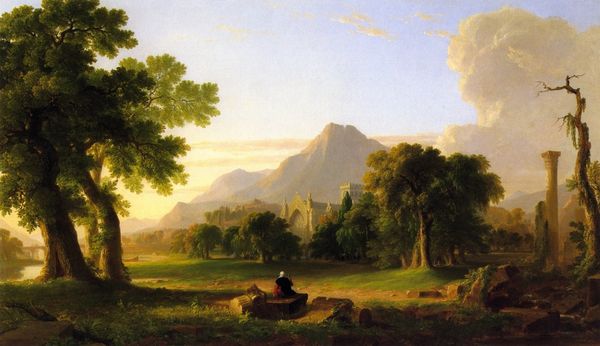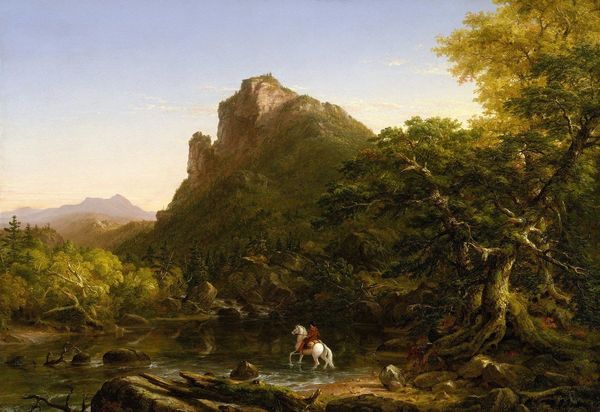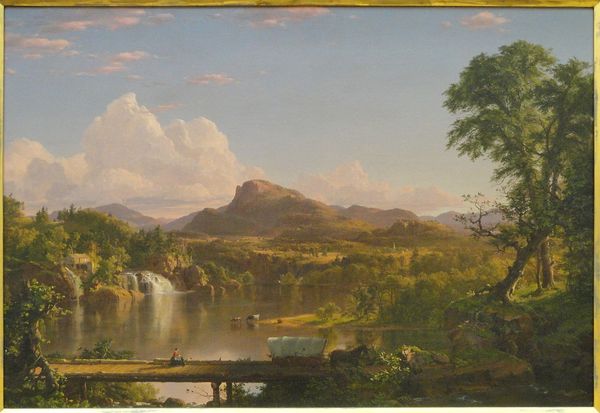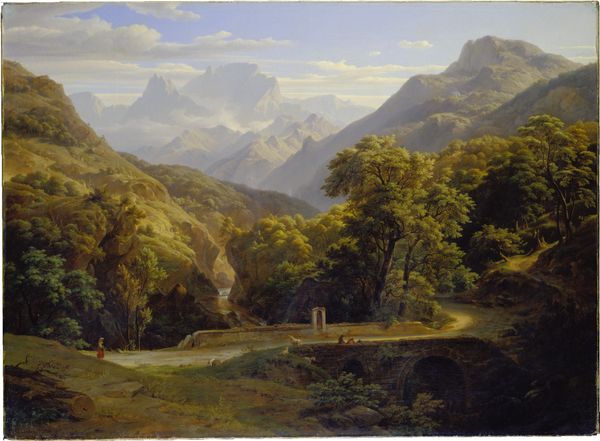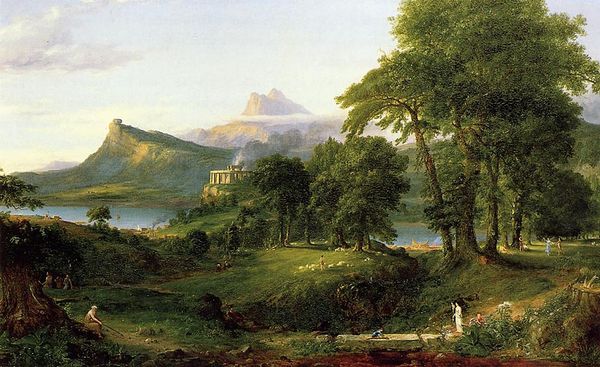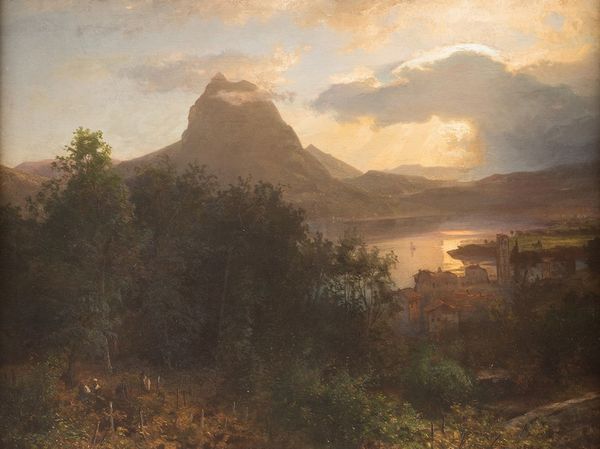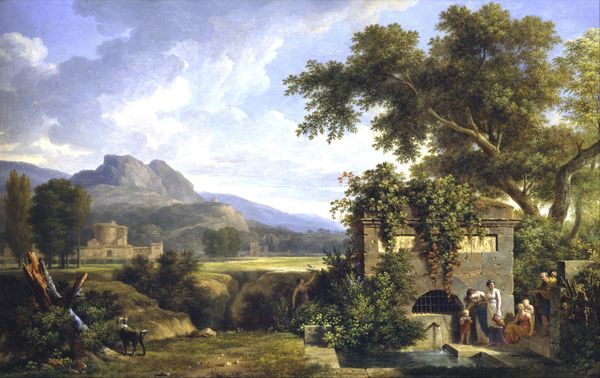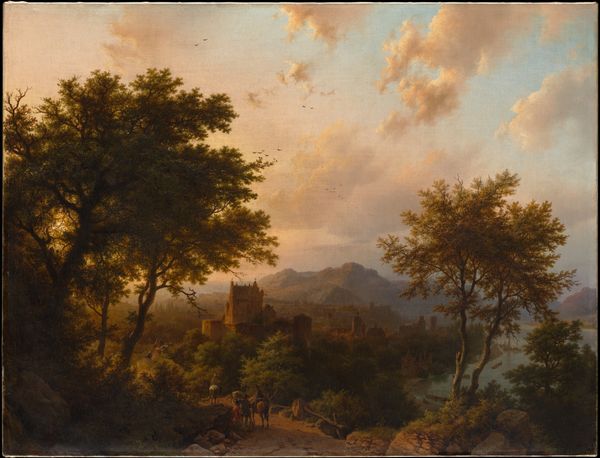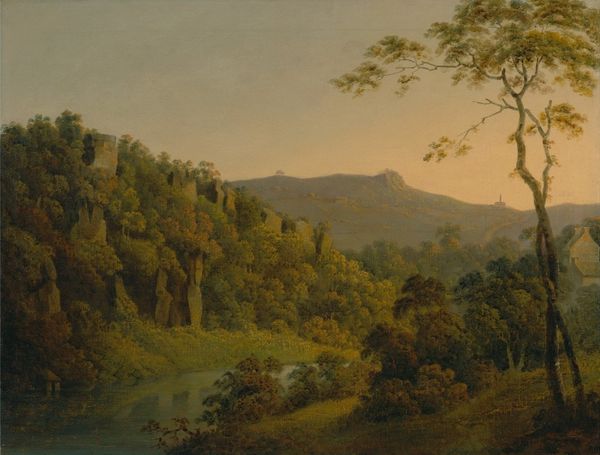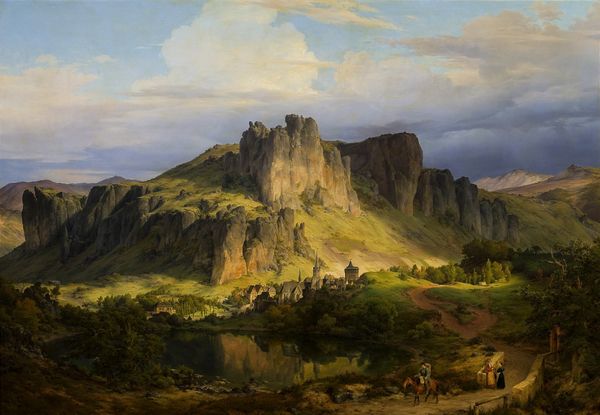
oil-paint
#
allegory
#
oil-paint
#
landscape
#
romanticism
#
history-painting
Copyright: Public Domain: Artvee
Thomas Cole painted "Dream of Arcadia" during the 1830's, a period defined by rapid industrialization in the United States. Cole, an English immigrant, looked back to classical myths and landscapes to express a longing for an idealized past. This imagined space is populated by figures in classical garb, pursuing leisure activities. They seem unburdened, set against a sublime natural backdrop, but this vision of leisure and harmony masks a deeper, social tension. While Cole romanticizes a simpler life, one cannot ignore the absence of certain bodies from this utopian landscape. This vision excludes laborers, enslaved people, and the working class. It raises important questions about whose dreams are valued and whose histories are erased in the construction of idyllic narratives. Cole once said that ‘to walk with nature as a poet is the necessary condition of a perfect landscape painter’. "Dream of Arcadia" asks us to consider whose nature and which poetry we are valuing. What does it mean to yearn for a past that never truly existed for everyone?
Comments
No comments
Be the first to comment and join the conversation on the ultimate creative platform.

